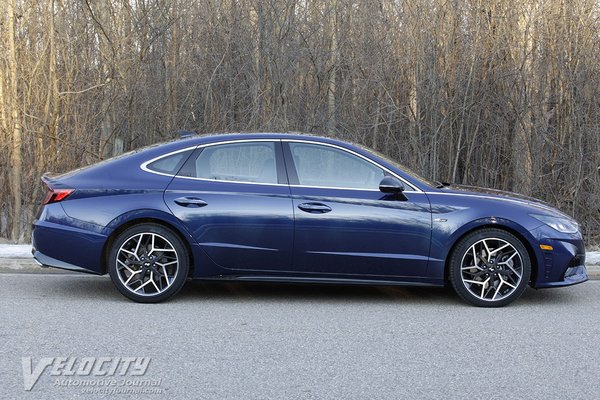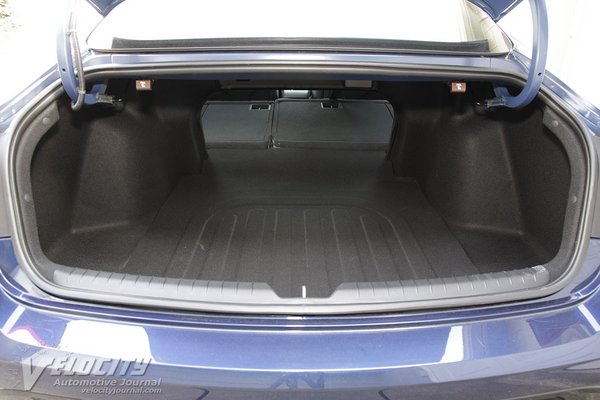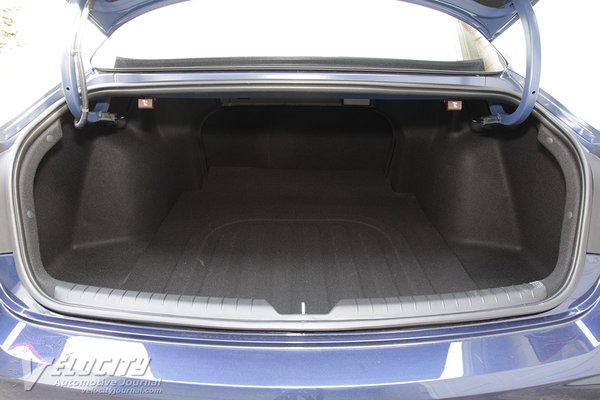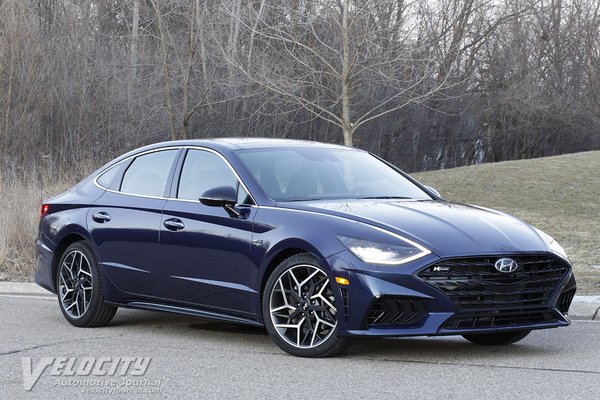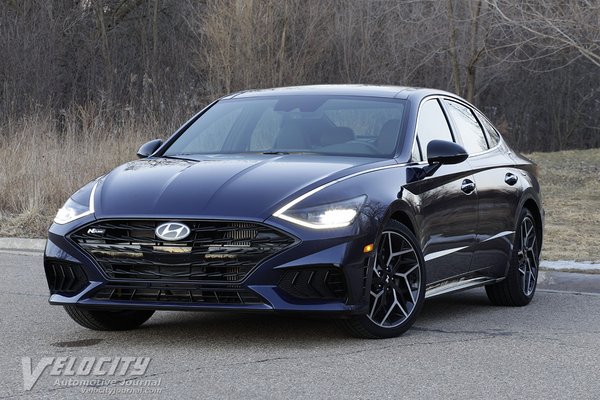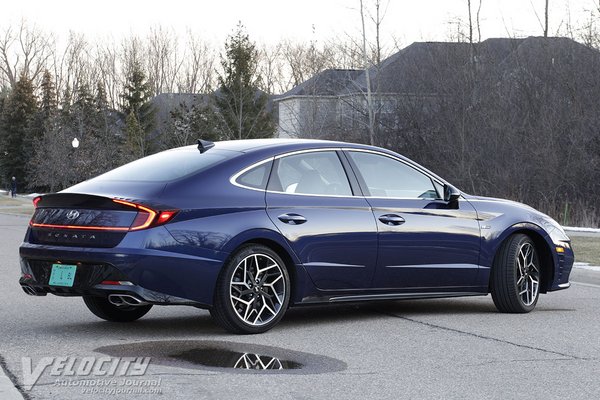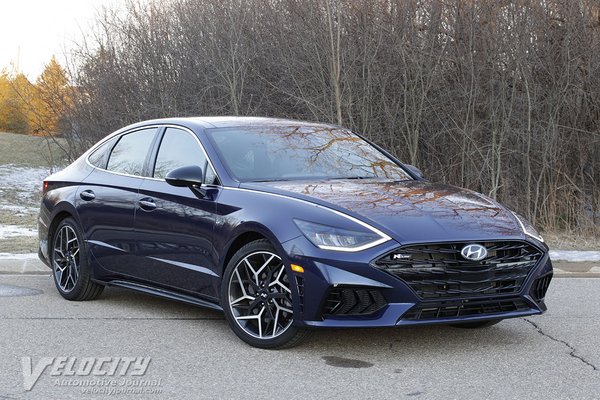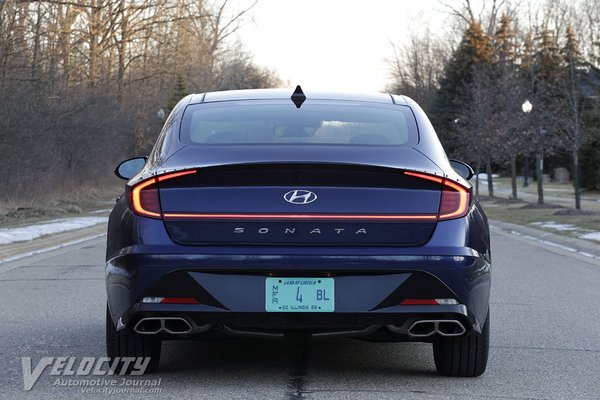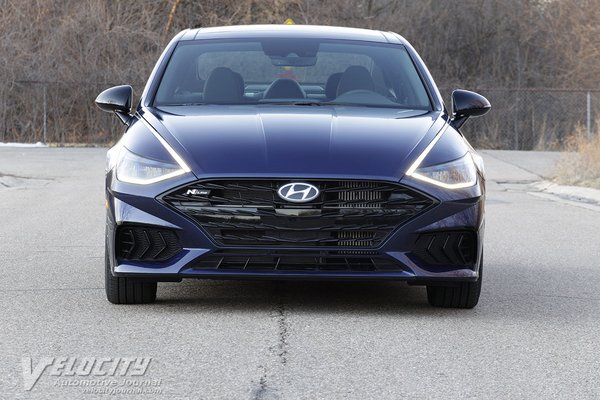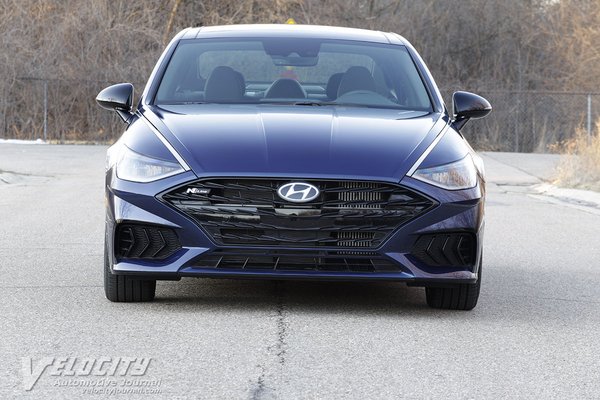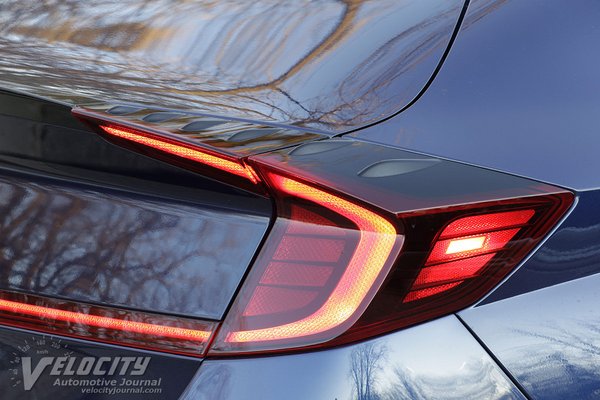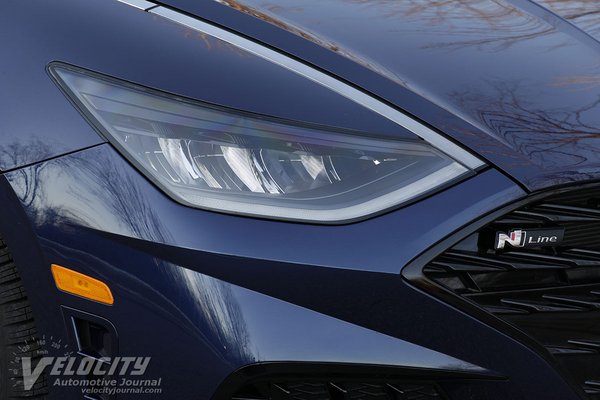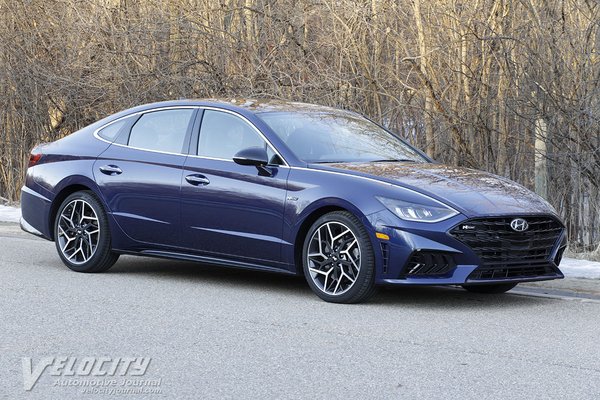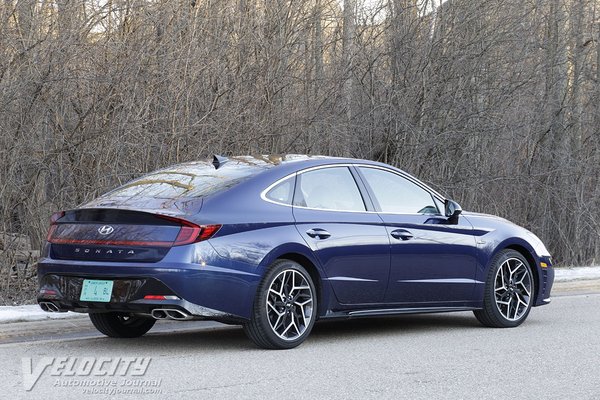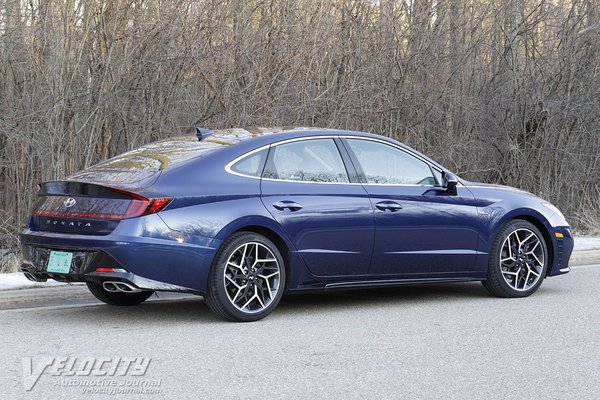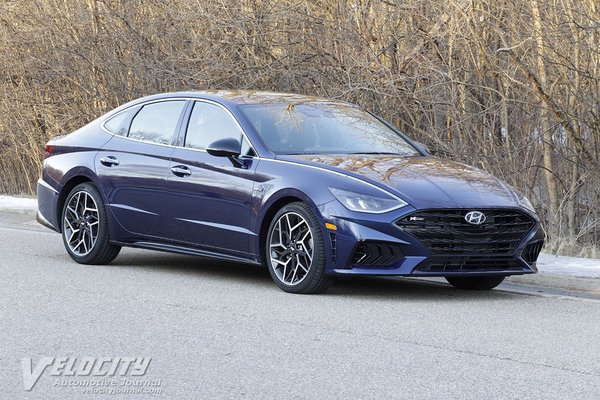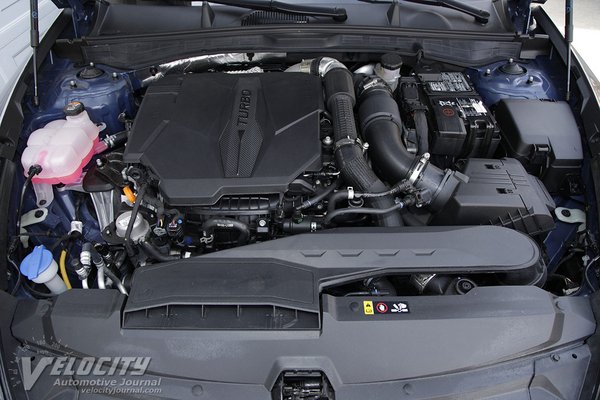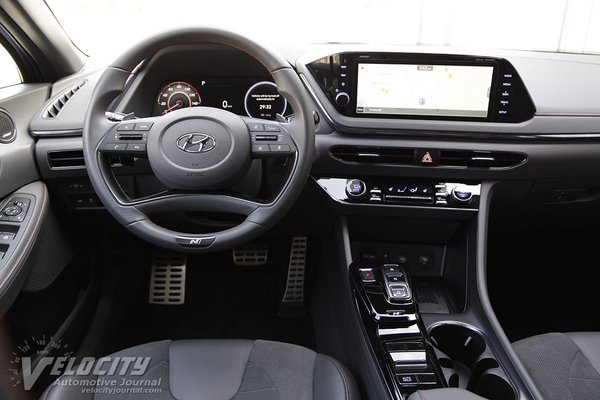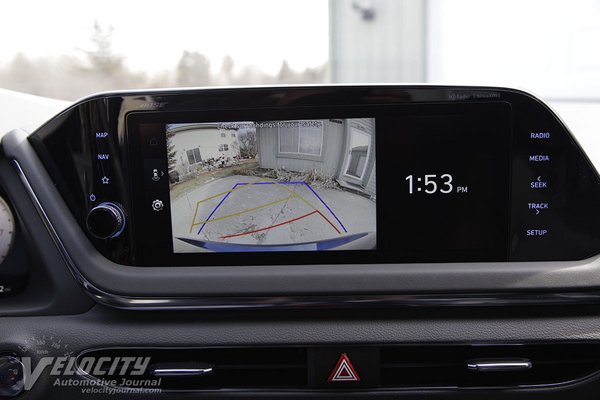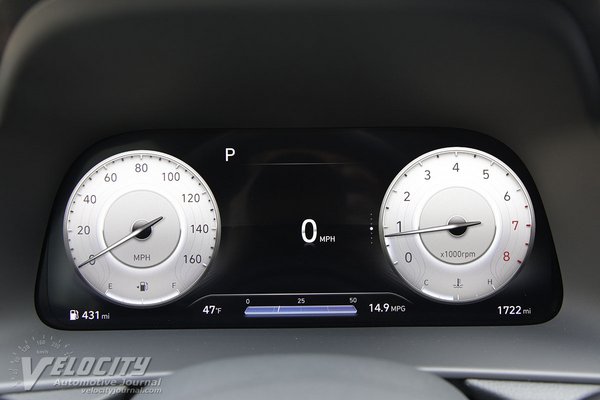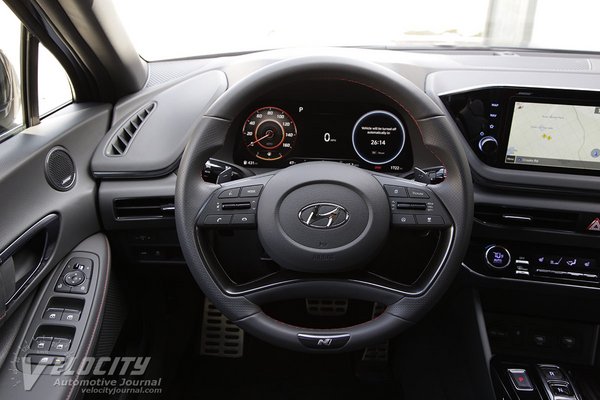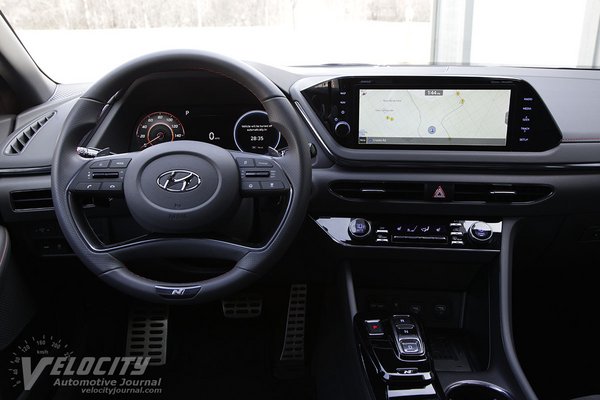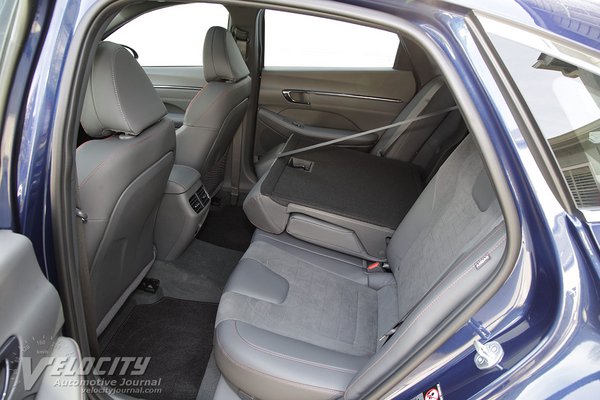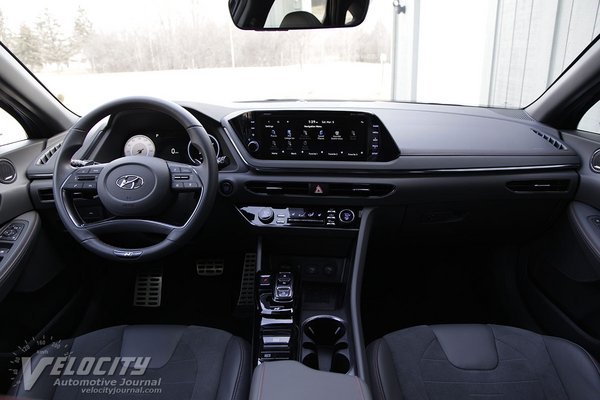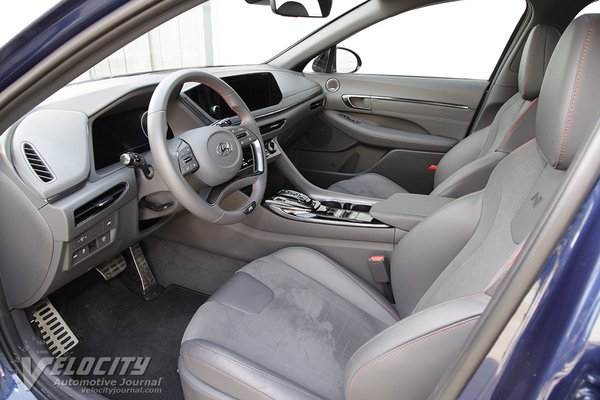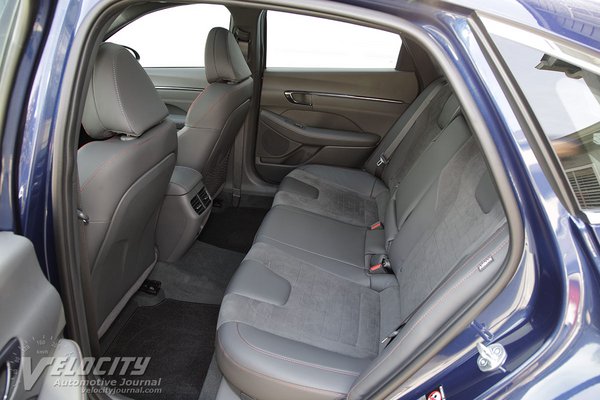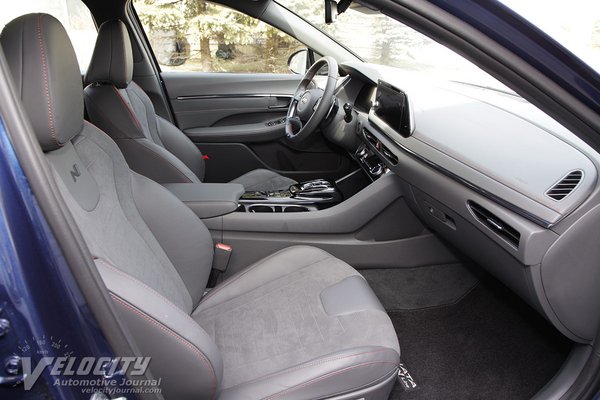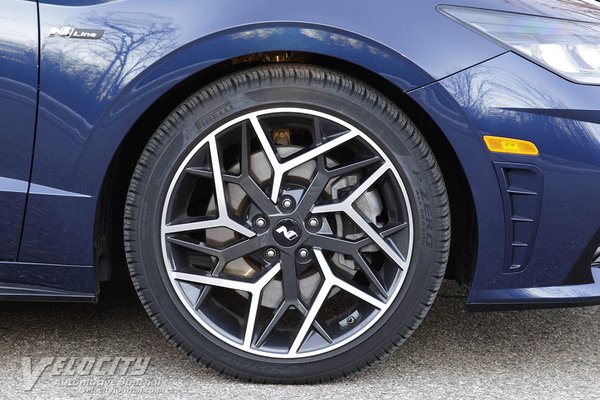2022 Hyundai Sonata N Line
06/14/2022
Shahed Hussain
One of the longest-running models in Hyundai's lineup, the Sonata has been sold in the US since the 1980s. Always in the shadow of American and Japanese midsize sedans, Hyundai's redesign in 2020 pushes the Sonata closer to the competition. Currently, the Sonata model range consists of six variants: SE ($24,500), SEL ($26,250), SEL Plus ($31,450), N Line ($33,750), Limited ($34,400) and N Line Night ($34,650). Hyundai also sells the Sonata as a hybrid: Blue ($27,350), SEL ($30,100) and Limited ($35,700). The N Line is the first Sonata sport sedan, and reflects Hyundai's plan to develop vehicles for enthusiasts.
We tested a 2022 Sonata N Line ($33,450) with minimal options. Carpeted floor mats ($169) were the only add-on. Including the $1,025 freight and handling fee added up to $34,644. Note that the MSRP on our test vehicle is lower than the current pricing on Hyundai's website. A panoramic sunroof, 12-speaker Bose audio system, leather-wrapped steering wheel, digital gauge cluster, 10.25-in. touchscreen, navigation, heated front sport seats, and an 8-way power driver's seat are all standard. Active safety technologies include rearview monitor, blind-spot collision-avoidance assist, rear cross-traffic alert, forward collision-avoidance assist, smart cruise control and lane-keeping assist.
Most other Sonatas are powered by a normally-aspirated 191-hp 2.5L (SE, SEL) or a 180-hp 1.6L turbo (SEL Plus & Limited) coupled to an 8-speed torque converter automatic. Hyundai's 2.5L turbo four and 8-speed dual-clutch transmission (DCT) are exclusive to the Sonata N Line. Developing 290-hp @ 5,800 RPM and 311 lb.-ft. from 1,650-4,000 RPM, the dual overhead-cam inline-4 has continuously variable valve-timing and drives the front wheels. The EPA fuel consumption estimates for the Sonata N Line are 23/33 MPG (city/hwy.). We averaged 27 MPG in mixed driving conditions, and up to 31 MPG on the highway.
All Sonatas use a MacPherson strut front suspension and a multilink rear layout with coil springs, gas-charged dampers and stabilizer bars. Steering is via a motor-assisted rack-and-pinion system, but the Sonata N Line gets a quicker ratio geared for 2.44 turns lock-to-lock. Other N Line exclusives are special 19-in. alloy wheels and P245/40R19 Pirelli P Zero all-season tires. Larger disc brakes are also standard: 13.8-in. front and 12.8 in. rear rotors. Sonata curb weights range from 3,120 lbs. (SE) to 3,552 lbs. (N Line).
Hyundai's interior design is fairly conventional but with a few unusual elements. Dark gray interior panels and light gray seats are broken up by the gloss black center console and polished aluminum trim on the dash and doors. A 4-spoke steering wheel trimmed in leather and matte aluminum includes integrated audio, phone, cruise and vehicle status controls. A 12.3 in. digital gauge cluster consists of a speedometer, powertrain mode indicator, plus fuel level and coolant temperature. Four powertrain modes are available: Normal, Sport, Sport+, and Custom. We preferred the Normal and Sport settings for most driving conditions. The infotainment display uses the touchscreen for most settings except for a power/volume knob. A separate dual-zone climate control panel also has settings for the front seat heaters. A Qi charging pad on the center console enables wireless recharging of mobile phones. Instead of a transmission shift lever, Hyundai substituted pushbuttons. Glancing at the gauge cluster to verify the transmission mode was easier than looking for a backlit "P" or "D" button on the center console.
The Sonata N Line's sport seats are covered in perforated microfiber cloth and vinyl. Only the driver's seat has power adjustments (8-way plus power lumbar support); the front passenger gets 6-way manual adjustments. The seats are moderately bolstered and offer excellent lateral support. Front headroom is surprisingly tight due to the A-pillar arc; occupants around 6 ft. tall will likely find their heads brushing the headliner. The rear seats provide decent support and adequate legroom, along with more apparent headroom than the front. As is common, the center seat position is only tolerable for short trips due to the rigid seatback. Rear passengers also benefit from a USB power port and dual vents behind the center console.
Hyundai's spring and damper settings results in superb body control over properly maintained roads. However, over the patched roads common in Michigan, the suspension is excessively jittery and lacks acceptable ride compliance. Both understeer and body roll are minimal; the N Line attacks winding roads like no other Sonata. Quick turn-in response, aided by communicative steering contributes to the N Line's sporty handling. The chassis exhibits excellent tracking and stability at 80 MPH on smooth roads; less pristine surfaces required frequent steering corrections. Engine and wind noise are subdued, but we noted some tire roar from the Pirellis. The bigger brakes provide excellent stopping power, aided by linear pedal actuation.
Despite Hyundai's best efforts, the N Line suffers from significant torque steer, although the traction control system minimizes wheel spin under acceleration. Re-engineering the Sonata platform for AWD would enhance both handling and traction, but likely at a higher cost. The 2.5L turbo four is impressive for its power delivery and refinement. Turbo lag is nearly imperceptible above 2,000 RPM, and midrange throttle response at highway speeds is superb. The 8-speed automatic responds quickly to shift commands via the steering wheel paddle shifters. We were impressed that the Hyundai DCT shifts as imperceptibly as a torque converter automatic.
Hyundai's first sporty Sonata completes an expansive model lineup, but needs more chassis development to be competitive. The N Line's turbo four and 8-speed dual-clutch transmission are compelling, but other midsize sedans deliver superior ride and handling, along with comparable power. For enthusiasts considering the Sonata N Line, spending another $6K for the Genesis G70 2.0T AWD is worth the extra money.

